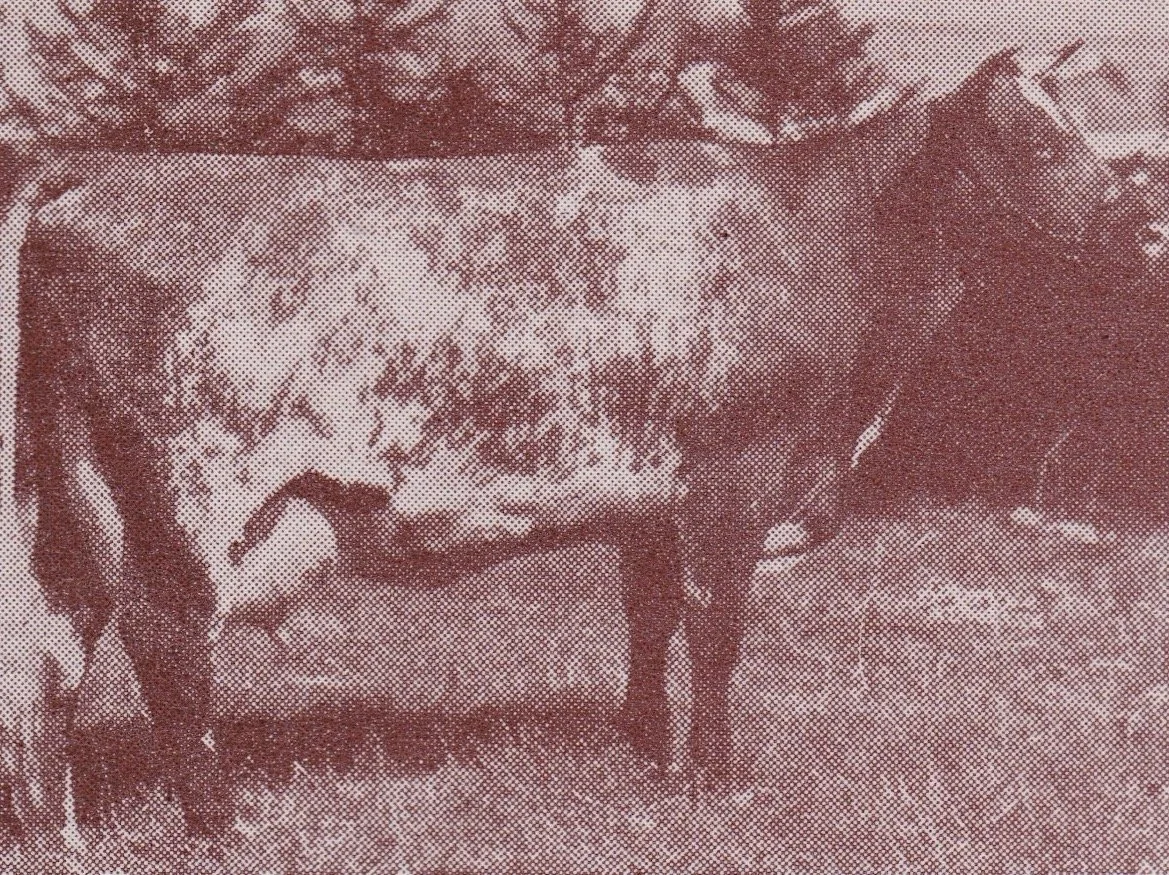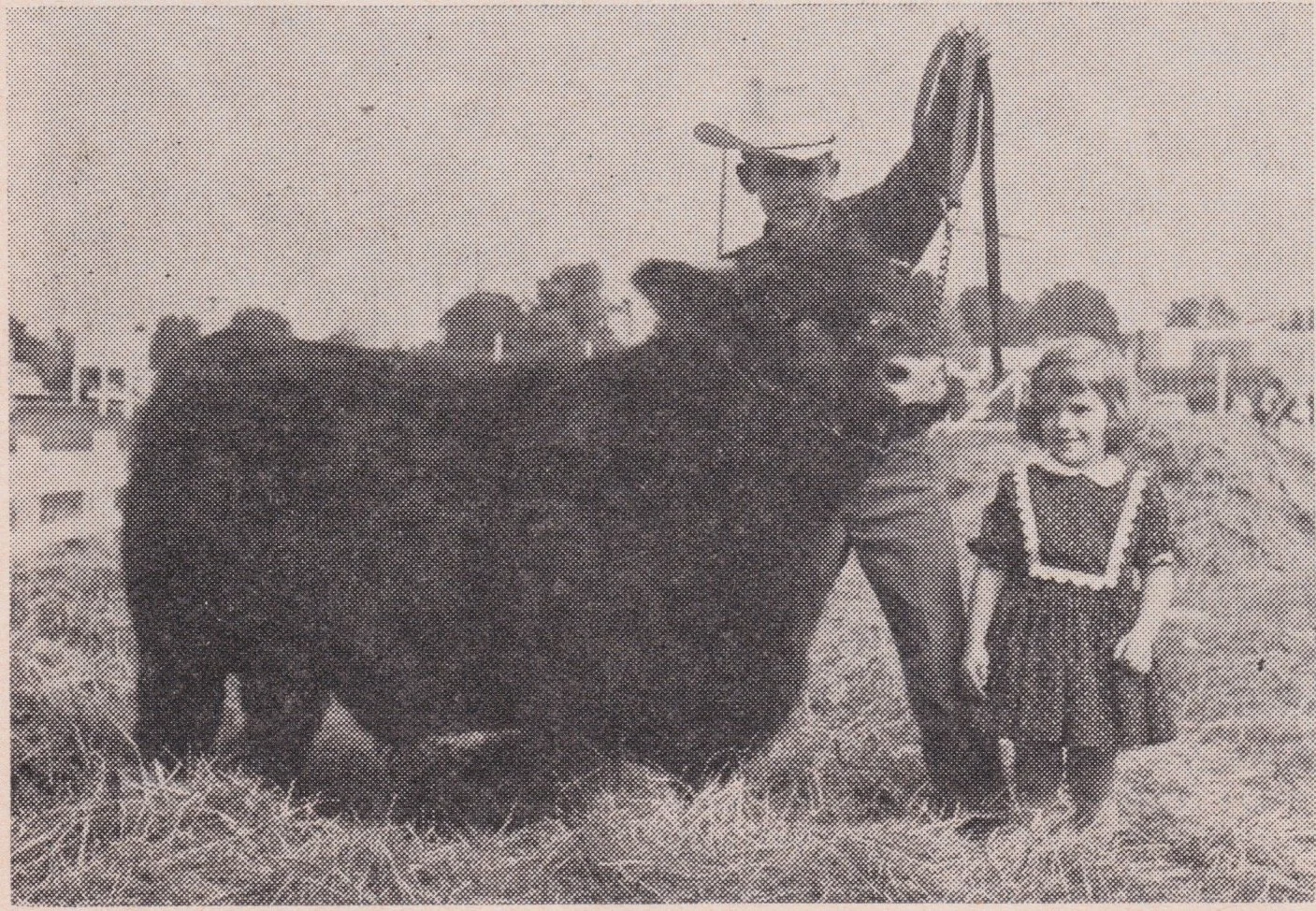Farm Update
After the withering drought, which was the longest dry spell we have ever had, the weather has returned to some semblance of normal although it will take a lot of snow this coming winter to rebuild water reserves. Given the resilience of Shorthorn cattle our herd seems to have done quite well and we are starting to look forward to our first 2022 calves next February. As usual we are anticipating an eclectic group that will further expand the Heritage Shorthorn genetic base.
Quarterly Topic: I Wonder Where Shorthorns Lost Their “Mojo”?
Background:
It has always fascinated me how Shorthorns managed to go from world leaders in the cattle industry to “also rans” in the competition for the cattle market. From their humble beginning in the Tees Valley of England they managed, through careful breeding improvements, to separate themselves from the other cattle breeds and ascend to the mantle of predominance over all cattle breeds in the world. Their reign lasted a hundred years. What changed that brought them to their present status of almost irrelevance on a comparative basis in the cattle industry?
Emergence of Shorthorns
In one sense the Shorthorn breed was lucky that thoughtful, constructive breeders like the Collins brothers (Charles and Robert), Thomas Bates, Thomas Boothe, and Amos Cruikshank became the progenitors of the breed. They were principled men that had a vision of what Shorthorn cattle could become and spent their lives trying to achieve Shorthorn greatness through ongoing breed improvement. Whether farmers were interested in beef cattle, milk cows, or dual purpose family cows Shorthorns were bred to fill all those niches thus resulting in their growing popularity and dominance of the cattle industry from the early 1800’s to the mid 20th century. Because of their versatility, including adaptation to various climatic conditions, they quickly spread from England to throughout the world. It is also important to note that their almost unique ability to improve other breeds through cross breeding led to their usage in many other ways that helped the cattle industry.
“Wachess” Eastern State Grand Champion Cow in mid 1940’s, with 20,619 lbs milk and 775.5 # butter fat in one year.
“Hub’s Director” Beef type Heritage Shorthorn in born 1975. He is tested free of Myostatin, PHA, TH, and DS
What Happened?
The loss of the dominance of Shorthorns was the result of several elements but I think the most salient mistakes are as follows: greed, shows, Holsteins, Angus, and stupidity. I will discuss each one separately to try paint an accurate picture of what has transpired to take Shorthorns from the breed in lead to a breed bringing up the rear. Certainly there were other factors that have played a role in the massive changes that have occurred in the cattle industry which impacted Shorthorns but the aforementioned factors were definitely the most important in causing the collapse of the Shorthorn industry. To put the interest in Shorthorns in perspective, and to provide insight into how interest has plummeted over the last 75 years one only has to look at membership in Shorthorn organizations 75 years ago versus today. Review of Shorthorn Worlds and the Milking Shorthorn Journal from that time period shows in many states a number of county level Shorthorn breed organizations that had 20-30 members. In comparison, today many states do not have that many members in Shorthorn breed associations/societies in the whole state let alone in a county level Shorthorn organization.
Greed:
As often happens in the livestock industry, once a breed (in this case Shorthorns) becomes popular, quality becomes marginalized as most breeders resort to selling even the inferior animals in the pursuit of cash flow. No thought is given to the repercussions when poor breeding stock is fostered onto new breeders who then become discouraged about the breed. As heightened pursuit of sales becomes paramount the breed can quickly become degraded and its value to other cattlemen lost in the money shuffle. There is no doubt that this phenomenon played a large role in the collapse of the Shorthorn industry.
Holsteins:
As the dairy industry moved to a more fluid milk model, where pounds of milk production became more important than butterfat, the rise of of the Holstein breed became the new face of the dairy industry because of their ability to produce large quantities of milk. Milking Shorthorns had played a significant role in the dairy industry up until the 1950’s partly because of their dual purpose role in the small dairies that dotted the rural landscape. Milking Shorthorn breeders ceded this new milking paradigm to Holsteins despite having a plethora of cows that could match Holsteins milk production pound for pound early on.
Angus:
Shorthorns were actually one of the cattle breeds used in the formation of the Angus breed so they actually helped make the Angus breed. When it became obvious in the early 60’s that the “pony” cattle craze was finished different, cattle breeds took different routes to extricate themselves from the hole they had dug for their breeds. Angus, through forward thinking breeders, quickly developed a new breed standard and ultimately developed a brilliant marketing tool “Certified Angus Beef” in 1978. This added many nails to the coffin of Shorthorn beef as Angus were now the standard bearers of “New American Beef”.
Stupidity:
Now we get to the heart of the matter based on history as outlined above. Shorthorn breed organizations failed to rein in gadfly promotors of inferior Shorthorns just to make a dollar. The lack of assertiveness by Shorthorn officials, to stop show judges from kowtowing to major industrial breeders desire to produce “pony” Shorthorns, further exacerbated an already accelerating decreasing interest in Shorthorn cattle.
The failure of Milking Shorthorn breeders to start selecting for high milk production is beyond me. Instead they decided to try to save themselves by bringing in Illawarra Shorthorns (a composite breed) from Australia to increase milk production and even going as far as changing the name of the official American Milking Shorthorn Society magazine (Milking Shorthorn Journal) to the “Journal of the Milking Shorthorn and Illawarra Breeds” in the 1970’s. Milking Shorthorn breeders did not stop there. They followed up with the wholesale introduction of Red and White Holsteins which continues still today. Talk about capitulation to Holsteins. Milking Shorthorn breeders wanted a “quick fix” instead of pursuing carefully designed breeding programs to enhance milk production and yet maintain some of the pluses inherent in Milking Shorthorns such as structural soundness, reproductive efficiency, longevity, and feed efficiency. In the process of crossbreeding several genetic defects were introduced into Milking Shorthorns that did not previously exist in the breed. The opportunity that was lost by Milking Shorthorn breeders by not preserving the purity of Milking Shorthorns is unfathomable. With the modern dairy industry moving to a composite milk cow Milking Shorthorns could have played an intricate role of enhancing the modern dairy cow. Instead, because they embraced crossbreeding early on, they are left holding an “empty bag” of genetic value.
Yearling Shorthorn Heifer in 1950’s
The American Shorthorn Association became the face of the beef segment of the Shorthorn breed when they “split the sheets” with Milking Shorthorns in the late 40’s. They were full participants in the “pony” Shorthorn craze. Looking at the promotion and pictures in Shorthorn Worlds from the 40’s and 50’s can only be described by the question “What were they thinking?”. As the new reality set in for beef cattle with the emergence of Angus, and then European continental breeds (Charolais, Simmental, Maine Anjou, etc), beef type Shorthorn breeders, embraced crossbreeding just as Milking Shorthorns had done for the quick fix, which introduced new genetic defects into the Shorthorn breed. Once again Shorthorns managed to lose their positive traits while increasing genetic defects. Crossbreeding was primarily accomplished by using Maine Anjou and Red Angus bloodlines. Recently Black Angus has been added to the mix with the Shorthorn Plus designation which really should be called Shorthorn crossbreds. The vigor that Shorthorns could have contributed to the commercial cattle in building better beef has essentially been lost through the short-sightedness (pun intended) of most Shorthorn breeders and their leaders in Shorthorn organizations.
Salvation:
Unfortunately the history of Shorthorns has not always been a continuum of breed improvement and positive influence. There is no question that the Shorthorn breed has fallen on hard times and is being propped up by what I call the “Show and Kid Model”. Both Beef and Milking Shorthorns organizations have decided to emphasize show cattle, and to mainly promote them to the parents of kids that want to show. who they hope will be the the stabilizing force that provides sale opportunities for Shorthorn breeders. There is a certain realization that Shorthorns have definitely had their heyday. The one shining light at the end of the “Shorthorn tunnel” is the emergence of Heritage Shorthorns which are the only 100% full blood Shorthorns left in the world. Because there is a considerable amount of semen remaining from quality old Heritage Shorthorn bulls, the positive possibilities for Heritage Shorthorns are being recognized throughout the world. The quality and genetic diversity that remains in Heritage Shorthorns is bringing a new opportunity for Shorthorn breeders to rebuild their herds and to introduce true hybrid vigor into other breeds of both commercial beef and dairy cows. With proper disciplined selection, breeder forethought, and good promotion Heritage Shorthorns can become the new standard bearers for what once made the Shorthorn breed great.
Joseph Schallberger, DVM, PhD
Whispering Hills Farm
Member Academy of Veterinary Consultants


